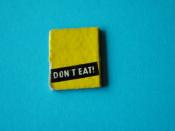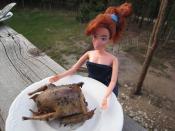She took the world by storm at New York's annual Toy Fair in 1959, and since then Barbie has remained one of the hottest selling toys in the world. With her good looks, charm, and charisma, Barbie has won the hearts of girls everywhere in record time. Unfortunately, it is Barbie's good looks that have led her to become a distorted image of what beauty is. In Barbie's early years, before women spoke openly about anorexia, Barbie's props encouraged girls to obsess on their weight. In addition, Barbie's 1965 "Slumber Party" outfit featured a bathroom scale "permanently set at 110" (Lord 229). Barbie has become an unrealistic symbol of body image to young girls across the board and it is the way that Mattel markets and advertises Barbie that has caused these negative feelings towards self-concept and body image amongst her audiences, resulting in unhappy girls and in some cases, severe self-esteem issues.
One of the main reasons why Barbie gives young girls negative feelings about body image is the unrealistic proportions Mattel has created for Barbie. "The possibility of being shaped like Barbie is less than one in 100,000 and if she were human size, she would stand 5 feet 6 inches tall, weigh 110 pounds, have a 39-inch bust line, an 18-inch waist, and 33-inch hips," (Wright). Even worse is the fact that Mattel justifies Barbie's unrealistic body shape by saying, "It helped clothes look better on her." Mattel has created Barbie to be so exceptionally thin that her weight and body proportions are not only unattainable but also unhealthy (Ive 283). Mattel does a good job at convincing young girls that Barbie is the ultimate role model and should be emulated. Thus, when girls see Barbie's tiny proportions, they assume that they should look like that as...


